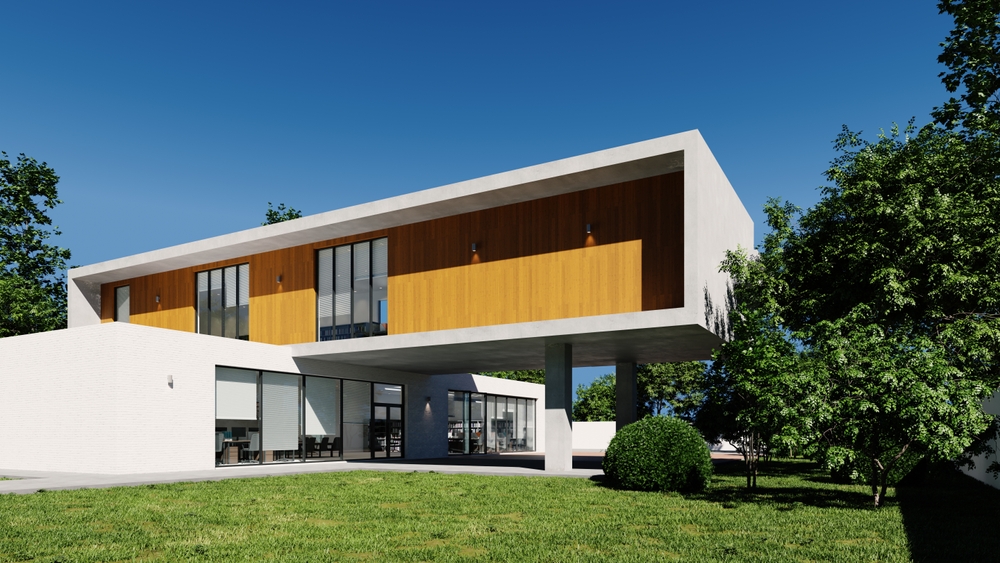In the dynamic world of modern architecture, the transformation from concept to concrete reality is an intricate dance of creativity and precision. At the forefront of this evolution is the art and science of 3D rendering – a tool that has become indispensable for architects and designers worldwide. Let’s explore how 3D rendering services, like those offered at Roava 3D Studio, are reshaping the landscape of contemporary architectural design.
Bringing Architectural Concepts to Life with 3D Rendering
Picture this: an architect dreams up a design, a blend of complex shapes and innovative materials. Traditionally, bringing this vision to life would be a challenge, but with 3D rendering, the possibilities are limitless. 3D rendering allows architects to create detailed, lifelike visualizations of their designs, ensuring every angle, texture, and light reflection is captured just as intended. It’s not just about seeing a building before it’s built; it’s about experiencing it.
Precision and Detail: The Hallmarks of Modern 3D Renders
The devil, as they say, is in the details. In modern architecture, precision is paramount, and 3D rendering services deliver just that. From the texture of the bricks to the play of sunlight through windows, every element is rendered with meticulous detail. This level of precision helps in identifying potential design issues early on, saving time and resources in the long run.
Enhancing Client Communication and Collaboration
Imagine trying to describe a complex architectural design using only words or 2D drawings. Challenging, right? This is where 3D rendering steps in, bridging the gap between architects’ visions and their clients’ understanding. By providing photorealistic visualizations, clients can fully grasp the proposed designs, leading to more effective communication and collaboration.
The Impact of 3D Rendering on Design Flexibility
One of the most significant advantages of 3D rendering in architecture is design flexibility. Architects can experiment with different materials, layouts, and structures quickly and easily. Changes that once took days to redraw manually can now be accomplished in a few clicks. This flexibility not only fosters creativity but also allows for rapid iteration and improvement of designs.
Streamlining the Approval Process
In the world of architecture, getting a design approved can be a lengthy and complex process. 3D rendering can streamline this process by providing clear, detailed visualizations that leave little room for misinterpretation. These renders can be pivotal in presentations to stakeholders, planning boards, and regulatory bodies, facilitating quicker and more informed decision-making.
Sustainable Design and 3D Rendering
Sustainability is a buzzword in today’s architectural landscape, and 3D rendering plays a crucial role in it. By visualizing how a building interacts with its environment, architects can make informed decisions about materials, energy efficiency, and environmental impact. This leads to more sustainable and responsible design choices, aligning with the growing global emphasis on eco-friendly practices.
The Future of Architecture with 3D Rendering Technology
As we look to the future, the integration of 3D rendering in architectural design is only set to deepen. Technologies like virtual reality (VR) and augmented reality (AR) are beginning to merge with 3D rendering, offering even more immersive design and presentation experiences. The future of architecture is not just about buildings but about creating experiences, and 3D rendering is the key to unlocking this new dimension.
Conclusion
3D rendering services have revolutionized the field of architecture, transforming the way architects design, present, and refine their creations. By offering unprecedented accuracy and detail, enhancing client communication, and streamlining the approval process, 3D rendering has become an essential tool in modern architectural design. As the industry continues to evolve, the role of 3D rendering will undoubtedly expand, continuing to turn visionary architectural concepts into stunning realities. For architects looking to embrace this transformation, Roava 3D Studio stands at the forefront of this exciting journey.
FAQs
What is the primary advantage of using 3D rendering in architecture?
The primary advantage is the ability to visualize architectural designs in high detail before construction, enhancing accuracy, client communication, and design flexibility.
How does 3D rendering facilitate client communication in architecture?
It provides realistic visualizations of the proposed designs, making it easier for clients to understand and engage with the project, leading to better collaboration and decision-making.
Can 3D rendering be used for sustainable design in architecture?
Yes, 3D rendering allows architects to assess the environmental impact and energy efficiency of their designs, promoting more sustainable and responsible architectural practices.
What technologies are merging with 3D rendering to enhance architectural design?
Virtual Reality (VR) and Augmented Reality (AR) are increasingly being integrated with 3D rendering, offering more immersive and interactive design experiences.
Where can architects find professional 3D rendering services?
Architects can find professional 3D rendering services at Roava 3D Studio, which specializes in providing high-quality, detailed architectural visualizations.


